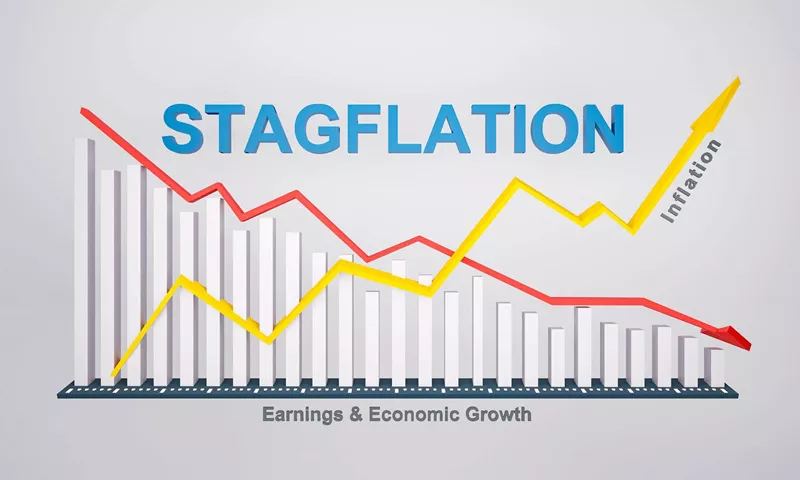Stagflation, the dreaded economic scenario marked by stagnant growth coupled with inflationary pressures, presents a unique challenge for investors. In such periods, traditional investment strategies may falter, requiring a recalibration of approaches to safeguard and grow wealth. This guide outlines prudent investment avenues and strategies to consider during stagflationary environments.
Understanding Stagflation
A stagnating economy, typified by poor or negative economic growth, high unemployment rates, and inflationary pressures, is known as stagflation. This economic abnormality presents serious difficulties for investors and governments alike, as traditional methods of resolving economic problems may end up being harmful or ineffectual.
Challenges of Stagflation
In a stagflationary environment, investors face a conundrum. Traditional safe-haven assets like bonds may offer minimal protection against inflation, while equities may struggle amid subdued economic activity. Moreover, rising commodity prices and production costs can erode profit margins for businesses, impacting stock performance.
Investment Strategies for Stagflation
1. Diversification: Stagflation underscores the importance of a diversified investment portfolio. Diversification helps spread risk across different asset classes, reducing vulnerability to specific economic headwinds. Allocate assets across equities, bonds, real estate, commodities, and alternative investments to mitigate risk exposure.
2. Inflation-Protected Securities: Consider allocating a portion of your portfolio to inflation-protected securities such as Treasury Inflation-Protected Securities (TIPS). These bonds adjust their principal value based on changes in the Consumer Price Index (CPI), offering a hedge against inflationary pressures.
3. Commodities: Stagflation often coincides with surging commodity prices. Investing in commodities like gold, silver, oil, and agricultural products can serve as a hedge against inflation. Exchange-Traded Funds (ETFs) and commodity futures contracts provide accessible avenues for exposure to commodity markets.
4. Defensive Stocks: Defensive stocks belong to sectors that remain relatively resilient during economic downturns. These include consumer staples, healthcare, and utilities. Companies in these sectors typically offer essential products and services that maintain demand regardless of economic conditions, making them attractive investments during stagflation.
5. Dividend-Paying Stocks: Dividend-paying stocks can provide a source of income and capital appreciation during stagflation. Look for companies with a history of consistent dividend payments and strong cash flows. Dividends can act as a buffer against inflation, providing a real return on investment over time.
6. Real Estate: Real estate investments, particularly in income-generating properties such as rental housing and commercial real estate, can offer a hedge against inflation. Rental income tends to rise with inflation, preserving the real value of the investment. Additionally, real estate assets often appreciate over the long term, providing capital appreciation potential.
7. International Diversification: Geographic diversification can enhance portfolio resilience during stagflation. Investing in international markets exposes investors to different economic cycles and currency movements, reducing dependency on any single economy. Consider allocating a portion of your portfolio to international equities, bonds, and real estate to capitalize on global opportunities.
8. Alternative Investments: Alternative investments like hedge funds, private equity, and infrastructure projects offer unique risk-return profiles that may complement traditional asset classes during stagflation. These investments often exhibit low correlation with conventional markets, providing diversification benefits and potential downside protection.
Risk Management and Monitoring
During stagflation, vigilant risk management and continuous monitoring of economic indicators are paramount. Stay informed about inflation rates, employment data, central bank policies, and geopolitical developments that can influence market dynamics. Regularly rebalance your portfolio to maintain desired asset allocations and adapt to changing market conditions.
Conclusion
Stagflation presents investors with formidable challenges, but also opportunities for astute portfolio management. By diversifying across asset classes, incorporating inflation-hedging strategies, and focusing on defensive and income-generating investments, investors can navigate the complexities of stagflation and position their portfolios for long-term success. Stay disciplined, stay informed, and consult with financial professionals to tailor strategies that align with your investment objectives and risk tolerance.


